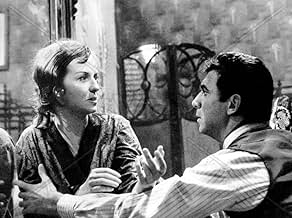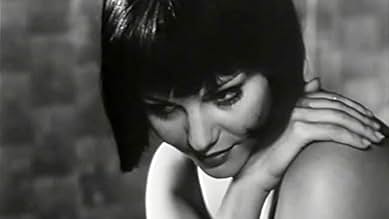A year before his death in 1928 Italo Svevo revised and republished his novel to great acclaim. The narrative style is a little heavy going but he has created a quartet of very interesting characters. Svevo much admired Sigmund Freud and this quartet are in effect 'crossed pairs' who represent Freud's theory that human beings are either 'fighters' or 'contemplators'. The devil-may-care womanising artist Balli and the sexually liberated Angiolina definitely belong to category 1 whilst intellectual Emilio and his reserved sister Amalia have almost contemplated themselves into a state of solitude. Emilio himself says that to love is to lose oneself and that is something that intellectuals find hard to do. His obsessive love for the fickle and faithless Angiolina drags him to the depths while his sister's unrequited love for Balli has even more dire consequences.
This angst ridden and passionate material is perfectly suited to the directorial style of Mauro Bolognini and this is arguably his greatest achievement.
This is the third of three films that Claudia Cardinale was to make with this director and she is magnificent as Angiolina, a woman that one should despise but whom one cannot fail to find fascinating. She wears a wig here cut in the style of Louise Brooks in 'Pandora's Box' which makes her even more alluring than usual. Dashing Philippe Leroy is perfectly cast as Balli and Betsy Blair, having been obliged to quit Hollywood for 'political' reasons, is superlative as Amalia. Her descent into madness is harrowing to behold. It is the casting of Anthony Franciosa as Emilio that has divided opinion. He had already proved in 'Hatful of Rain' that with good material and a first class director he could rise to the occasion and he does so again here. Although roughly the same age as the character in the novel he doesn't alas quite convince as an intellectual. Emilio is probably the least appealing of the quartet and the most demanding to play but Franciosa captures both the character's weakness and egocentricity. His talk of approaching age is not that surprising bearing in mind that in the 1920's to be thirty-five was considered middle-aged! Obviously cast with a view to the American market one cannot help wondering if he was first choice for the role.
The film itself is rendered unforgettable by the images that magician Armando Nannuzzi has captured of Hapsburgian Trieste and the Adriatic. Multi-award winning Piero Tosi, favoured by both Bolognini and Visconti, has again excelled with the sets and costumes. Piero Piccioni has contributed a truly haunting score.
Bolognini has unfairly been dismissed as a 'poor man's Visconti' but they do have a great deal in common. They are both perfectionists, extremely erudite, stylish and skilful with a stunning visual sense. If Visconti is Italian cinema's Michelangelo then Bolognini is surely its Raphael.

















